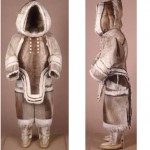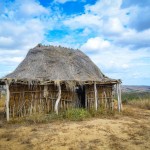As Low-tech Magazine wrote in 2019, given the right conditions, a mechanical windmill with an oversized brake system is a cheap, effective, and sustainable heating system. Earlier this year, Malte Neumeier from the German Aerospace Center informed us that he and his team are investigating the technical and economical challenges of the technology.
“We started our research, with a birds eye techno-economic analysis and a scoping review. The results were promising, so we decided to build our own prototype. To refine our analysis, we are now searching for people, who already have experience with this technology. Maybe we could discuss some lessons learned. Do you have contact to any person experienced in wind-thermal energy applications? I would really appreciate this.”
The scoping review is freely accessible online: Neumeier, Malte, et al. “State of the art of windthermal turbines: A systematic scoping review of direct wind-to-heat conversion technologies.” Journal of Energy Resources Technology 144.4 (2022). From the abstract:
Windthermal turbines convert wind directly into thermal energy. Albeit it is an uncharted field of research, the overall system efficiency and costs of fully developed windthermal turbines are promising; since they can contribute to a sustainable energy transition. We identify the current state of the art of windthermal conversion principles, technology maturity, applications, substitutes, advantages, and disadvantages.
To scope relevant literature, we follow the Joanna Briggs Institutes selection and screening process resulting in 61 relevant publications from which we identified three main conversion types, namely, compression-, friction-, and induction-based windthermal devices. These devices can directly supply thermal energy for space heating or industrial processes, work as a component of wind-powered thermal energy systems, short windthermal energy system (WTES), or can substitute any conventional or renewable heat device.
Although heat is the lowest form of energy, windthermal applications could provide cheap renewable energy that can be stored easily enhancing security of supply. However, these technologies are currently on laboratory scale, and we suggest scaling up the existing prototypes to engineering scale. Finally, due to a missing general terminology, we propose to establish one of the terms windthermal energy, ventothermal energy, or anemothermal energy to distinguish these specific wind energy conversion technologies.
The cost assessment, which was quoted in the Low-tech Magazine article, is also online: Cao, Karl-Kiên, et al. “Expanding the horizons of power-to-heat: Cost assessment for new space heating concepts with Wind Powered Thermal Energy Systems.” Energy 164 (2018): 925-936.





